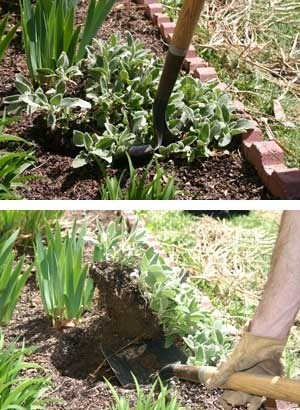
It might seem counter-intuitive, but there are three very good reasons for chopping through the roots of your perfectly healthy perennials to divide them. First off, you'll regain control over the too-vigorous flowers that are trying to conquer every available square inch of your garden. Second, you'll rejuvenate those that seem to be slipping into a pattern of fewer, smaller flowers, and lastly (and best of all) free plants!
It's easy to know when it's time to divide perennials that are taking over the garden. But actually, all perennials are pretty good about signaling when their ready to be divided. When a plant's roots become densely packed the flowers will start to become smaller and fewer in number. Really densely packed roots will start to form a donut-shaped clump-an outside ring of growth surrounding an area in the middle where nothing seems to be growing. A plant may also start to flop over or need staking after never needing it before. If your perennials are giving you any of these signals, it's time to divide.
As a general rule, perennials that bloom in the spring and summer should be divided in the fall, and plants that bloom in the fall should be divided in the spring. If, on the other hand, you don't like playing by the rules (like me), many perennials can be divided at either end of the season. The important thing to remember is not to divide plants when they are blooming (you want the plant's energy going toward root and leaf production after division) and avoid dividing them on hot, sunny days.
There are two main techniques used for dividing perennials, separating the roots by hand, or using a tool. Start by lifting up the parent plant with a pointed shovel or space. Dig down on all four sides about 4 to 6 inches away from the plant. As you lift up the plant, it will quickly become apparent whether or not you need to use a tool. In cases where the plant has extremely tenacious roots, you may need to slice them with a sharp serrated knife in order to lift part of the plant out for further division.
Some perennials do not like to be disturbed and should not be divided unless absolutely necessary. These include balloon flower, baby's breath, bugbane, butterfly weed, gas plants, Japanese anemone, false indigo, columbines, goatsbeard and Lenten roses.

About The Author: Ellen Brown is an environmental writer and photographer and the owner of Sustainable Media, an environmental media company that specializes in helping businesses and organizations promote eco-friendly products and services.
Add your voice! Click below to comment. ThriftyFun is powered by your wisdom!